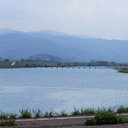Mechanisms of the pH- and Oxygen-Dependent Oxidation Activities of Artesunate.
Parole chiave
Astratto
Artemisinin was discovered in 1971 as a constituent of the wormwood genus plant (Artemisia annua). This plant has been used as an herbal medicine to treat malaria since ancient times. The compound artemisinin has a sesquiterpene lactone bearing a peroxide group that offers its biological activity. In addition to anti-malarial activity, artemisinin derivatives have been reported to exert antitumor activity in cancer cells, and have attracted attention as potential anti-cancer drugs. Mechanisms that might explain the antitumor activities of artemisinin derivatives reportedly induction of apoptosis, angiogenesis inhibitory effects, inhibition of hypoxia-inducible factor-1α (HIF-1α) activation, and direct DNA injury. Reactive oxygen species (ROS) generation is involved in many cases. However, little is known about the mechanism of ROS formation from artemisinin derivatives and what types of ROS are produced. Therefore, we investigated the iron-induced ROS formation mechanism by using artesunate, a water-soluble artemisinin derivative, which is thought to be the underlying mechanism involved in artesunate-mediated cell death. The ROS generated by the coexistence of iron(II), artesunate, and molecular oxygen was a hydroxyl radical or hydroxyl radical-like ROS. Artesunate can reduce iron(III) to iron(II), which enables generation of ROS irrespective of the iron valence. We found that reduction from iron(III) to iron(II) was activated in the acidic rather than the neutral region and was proportional to the hydrogen ion concentration.


